The speckled chachalaca was photographed on November 14th 2023 at 7:43 am in our protected area. The Ecuadorians call it Chachalaca jaspeada (Spotted Chachalaca). It belongs to the Cracidae family and its scientific name is Ortalis guttata.
It grows to a length of 40 to 60 cm and weighs from 500 to 600 gr. These birds mate between October and November and build their nests at a height of around 2 metres.
They live mainly in forests and in trees, feeding on fallen fruit. They are highly prized for their meat. Many species have been greatly reduced by hunting and their reproduction rate is low.
Habits:
They are found in groups of 4 to 6, usually under foliage, especially at the edge of the woods, although they are also found outdoors early in the morning. This species is seldom seen on the ground and never flies up into the canopy of a tree. The simple, cup-shaped nests are built in the shelter of low vegetation.
This species produces a loud, shrill chorus, particularly audible at dusk, often heard by several birds at once. This gives the song a rhythmic quality, including the classic cha-cha-la-cák. As heard below:
Speckled Chachalaca, Ortalis guttata
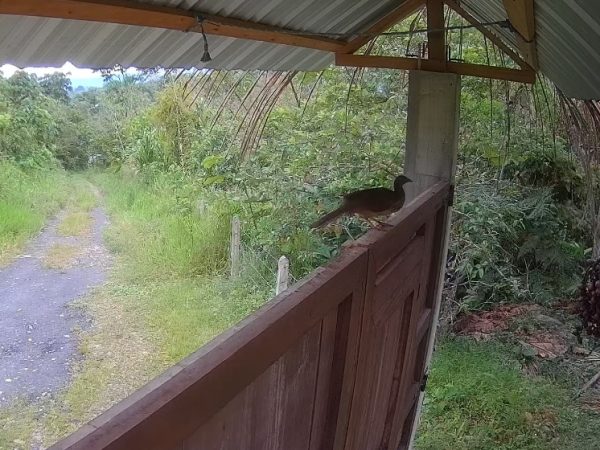
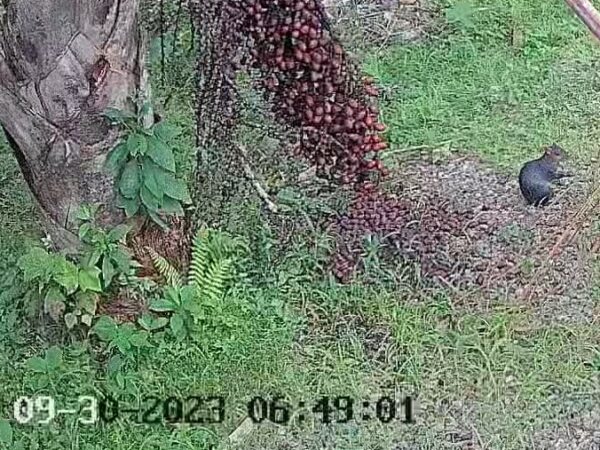
Black Agouti
On the morning of 30th September 2023, at 6.49am, a species commonly called Aguti or Guatusa (Spanish) by the inhabitants of the Amazon region was photographed in the reserve feeding on the seeds of the Morete palm (Mauritia flexuosa).
According to its characteristics, this species is scientifically known as Dasyprocta fuliginosa. Its genus is Agutis (Dasyprocta). It belongs to the family Agutis and Acouchis of the order rodents.
The black agouti lives in tropical rainforest regions, but also in secondary and mountain forests on the eastern side of the Andes up to altitudes of around 1000 meters. They usually live alone or in pairs, they are diurnal and have their main activity in the morning after sunrise and in the evening at dusk. When threatened, the animals stamp their feet on the ground and emit series of alarm calls consisting of several grunts and whistles.
Habits:
They are herbivorous and feed primarily on fruits, seeds and nuts. The animals are particularly important as seed distributors and thus as supporters of the spread of trees in forest felling areas in the Amazon region. The animals eat the nuts very noisily.
Black agouti have no specific reproductive season and are sexually active all year round, although the number of pregnant females is independent of whether it is dry or wet season.
On the average, the litters consist of two young animals, which are nursed by the mother over a period of around 20 weeks.
The black agouti is classified as “least concern” in the Red List by the International Union for Conservation of Nature (IUCN). This is due to the wide distribution and the assumed large population of the species. This species is intensively hunted for meat, but still exist near villages.
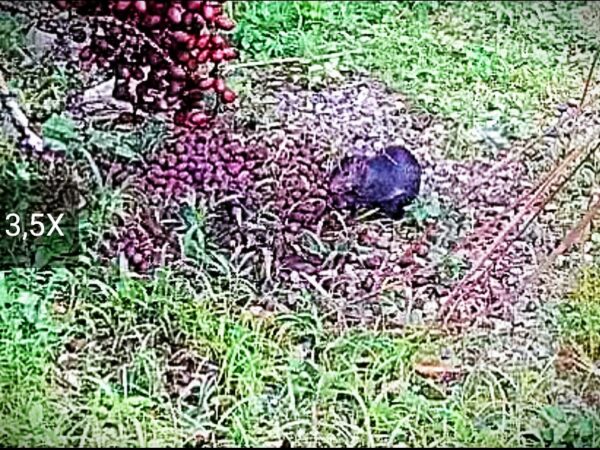
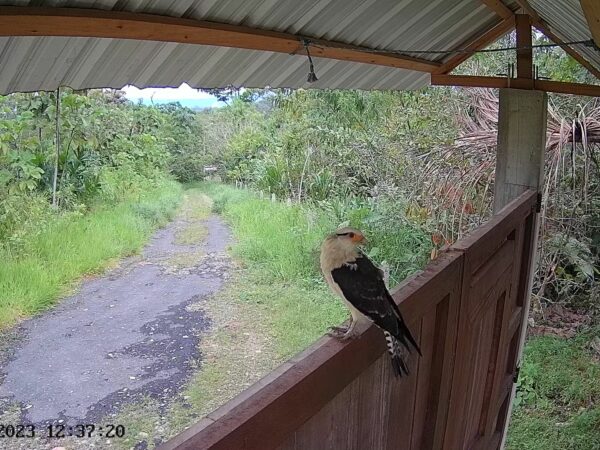
Yelow-headed Caracara
The Yellow-headed Caracara was first photographed in our reserved area on March 19th, 2023. Its scientific name is Milvago chimachima. It is a hawk-like bird in the falcon family (Falconidae), native to Central and South America.
It has a small beak and claws and is commonly found along rivers in the northeastern lowlands of Ecuador. It lives alone or in pairs. The nest is a platform in the branches of a tree. It lays one or two eggs per clutch.
The yellow-headed caracara is generally sedentary, but records from northern Central America and islands off the north coast of South America indicate that individuals do wander. Within its usual range, it colonizes cleared areas.
It usually flies along larger rivers and often perches on wooden poles to roost. It can sometimes be seen in adjacent pastures, visiting livestock and even perching on the backs of cattle to remove ticks.
The Yellow-headed Caracara is omnivorous and relies heavily on scavenging. Its diet includes carrion, insects (adult and larval), crustaceans, fish, reptiles, amphibians, mammals, bird eggs and nestlings, horse dung, fruits such as those of the oil palm (Elaeis guineensis), coconut and maize, and seeds. It will also take ticks from cattle and other large mammals such as capybaras and tapirs, and enlarge open wounds.
Much of its diet is taken while walking on the ground, but it does some hunting on the wing. It has also been observed foraging for small invertebrates in the fur of brown-throated three-toed sloths. Mixed-species feeding flocks do not appear to regard it as a threat, as it does not make alarm calls when encountered.
Voice: Occasionally gives a rather weak nasal call, <<riiiiah<<.
The population trend appears to be increasing, so the species is not approaching the thresholds for endangerment. For this reason, the Yellow-headed Caracara, Milvago chimachima, is classified as least concern on the IUCN red List of threatened Species.
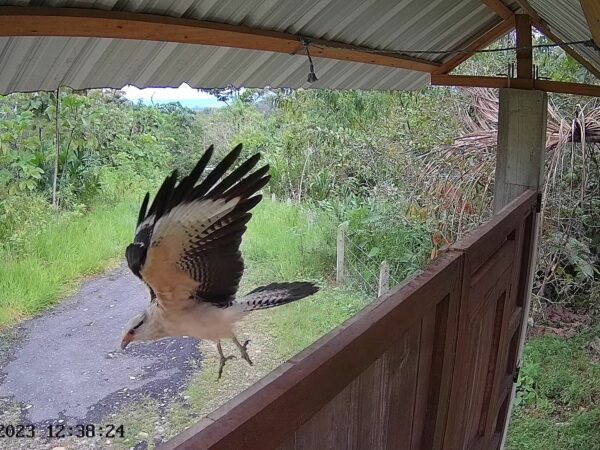
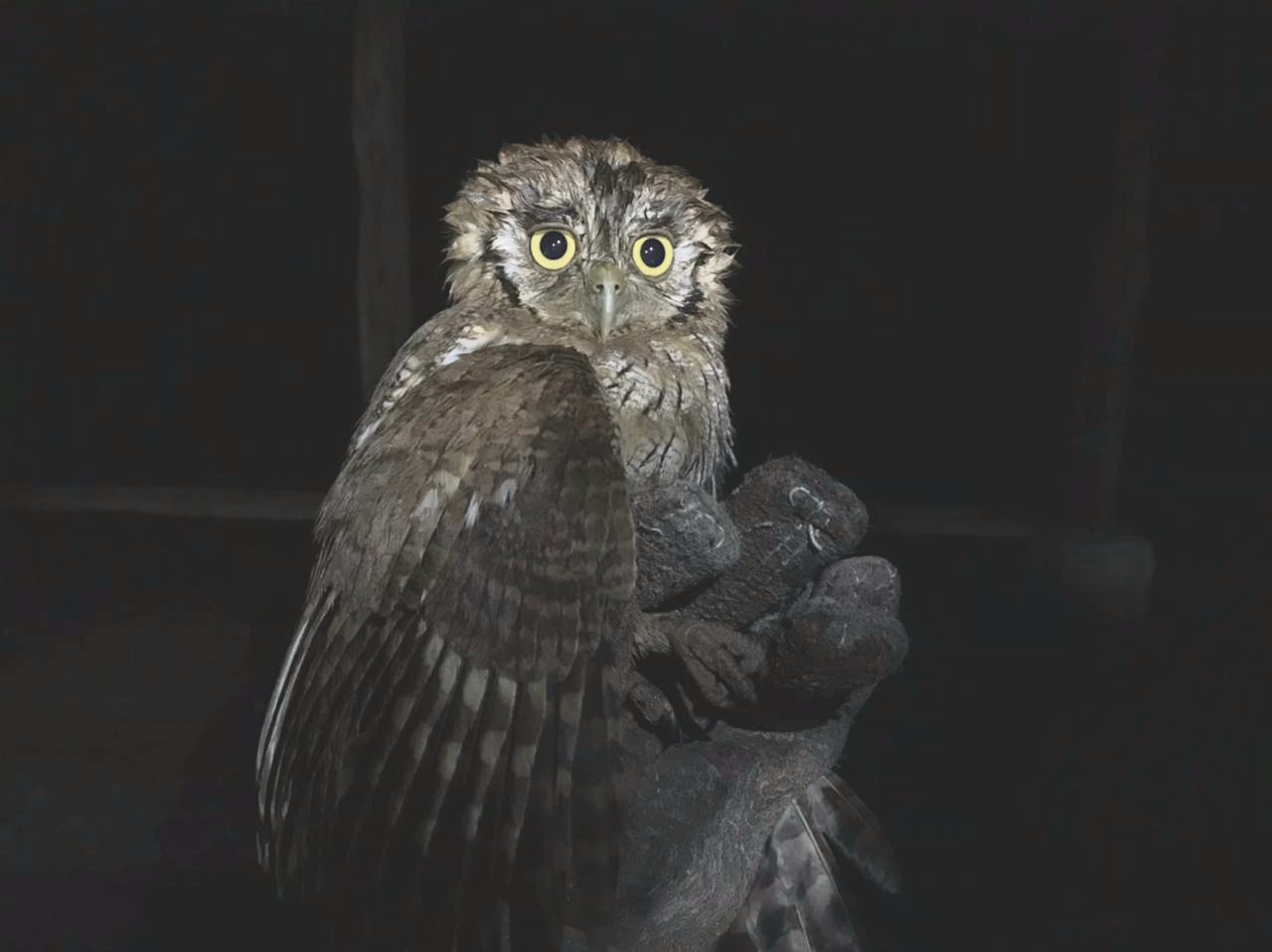
Tropical screech owl
On the night of 02 August 2022, a species of Tropical Screech Owl was photographed during a night excursion in our reserve. This species is scientifically known as Megascops Choliba of the Screech Owl genus (Megascops) of the Owl family (Strigidae).
The tropical screech owl is also known locally as currucutú, sumurucucu, and alilicucu in the Amazon region and is found throughout the Americas. Like other nocturnal birds of prey, they are predators equipped with specialized claws, legs, and beaks for hunting. Their size is between 23 and 24 cm and they live in forests and on river banks.
Habits:
The owl is exclusively nocturnal. She sleeps under leaves during the day, often leaning against the trunk of the tree and trying to avoid being discovered. They are usually found in pairs. In search of food, they perch on exposed branches and regularly roam through forest clearings.
Their song is often sung by the male, a short trill typically ending with a distinctive and abrupt ‘UuK!’ or !Uuk! !Ouk! ends. It is believed that the female occasionally responds with a faint series of tu-tu-tú-tú-tú-tu-tu calls. They feed on beetles that they catch on the ground and also look out for moths and other winged insects that they hunt in flight. During the fall or winter months, when the number of anthropods decreases dramatically, it is possible that they feed on rodents and other small animals.
Their function in nature is very positive, as their diet helps eliminate agricultural pests and disease vectors. From October onwards they nest in tree hollows. The single annual clutch consists of three or four and sometimes up to six white eggs.
The tropical screech owl Megascops choliba was last assessed on the IUCN (International Union for Conservation of Nature) Red List of Threatened Species in 2020. Megascops choliba is listed as Least Concern.
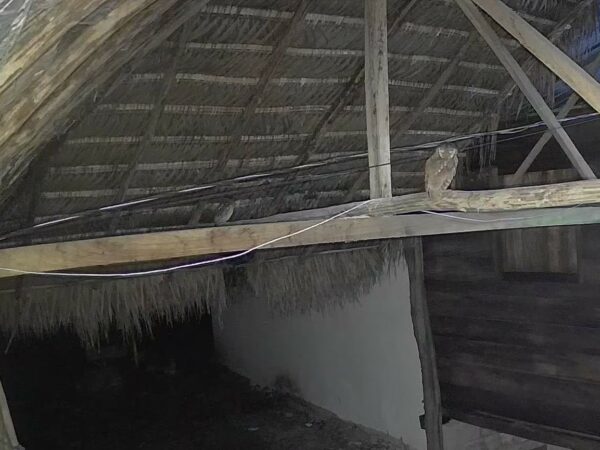
Water Analysis of the Llushian River
In 2022 we took two water samples from the Llushian River for a laboratory analysis, one directly from the river and the other from the tap of our hut, to determine if any chemicals or pollutants were contaminating the river.
The results of the laboratory Labsu of Vicariato Apostolico in Coca in the province of Orellana show that 95% of the water is of good quality for consumption. It therefore contains no chemical impurities.


